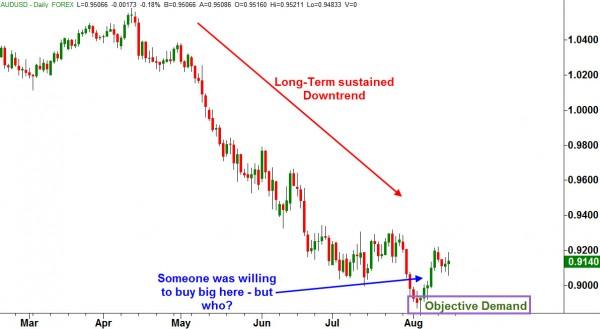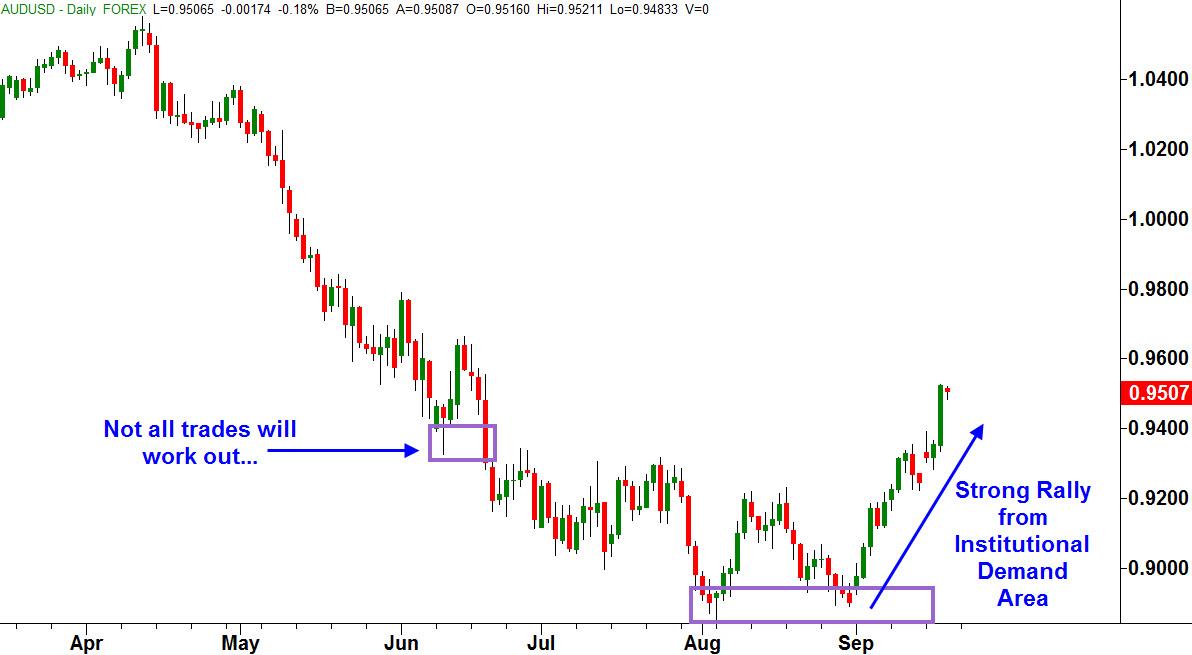![]()
Have you ever heard of the saying, “When in Rome, do as the Romans do?” I like to travel as much as I can in my spare time and see as many different cultures and places as possible. No matter where I go, I always like to respect the local practices and get myself as involved in their way of life as much as I can. I live by this famous saying whenever I am in a place or environment which is different to what I am used to on a regular daily basis. I think that there is nothing worse than visiting a foreign country and not immersing yourself in the way of life which goes with that nation or culture. Not only can you blend into the environment in a much smoother way but you also learn more about where you are and the whole experience becomes a far more rewarding one as well. It’s a win-win every time.
Well, I also found that when it comes to trading the financial markets on a daily basis, it also rewards me to “do as the Romans do” once again, rather than fight what’s a natural part of the scenario. What I mean by this is that when I trade, I like to trade like the people who dominate the markets trade. As you may already know, the majority of traders speculating in today’s markets are more than used to being saturated with the level of information available to them via the mediums of books, seminars and of course the world wide web. There are literally thousands of different views on what causes market prices to move in one direction or the other and many different tools, indicators and strategies which attempt to predict the next move the market will make. While there is absolutely nothing wrong with the amount of information available to us, we still need to be very careful to ensure that we listen to words of advice which actually make logical sense. In the reality of market speculation, it can be very dangerous to come to the environment with a whole set of pre-conceived ideas. There are both good and bad practices one can bring to the markets but one thing is for sure and that is to understand the rules behind any game before you start to play it.
Whether we like it or not, the markets are a playground for the people with the deepest pockets.
The more money you have, the more influence you can have on the moves which happen. Let’s face it; I can’t alone push the market higher because I simply do not have that kind of buying power available to me. Even if I got together with all of my trading friends and associates and took the same trades at the exact same time, I still would not be able to influence the direction of the moves in price. In today’s markets it has gotten to the point where not even one of the largest institutions in the world could single-handedly control prices but the big institutions do have the ability to stop the market in its tracks. This is simply a result of the pure size in which they have to trade. When I buy $200,000 worth of Euros on leverage in the FX market, there will easily be enough liquidity out there to sell that amount to me, thus creating an equilibrium point at that exact price I was willing to buy.
However, let’s say that I was representing a major financial institution and I was looking to get into a short position on the Japanese Yen with a size of $25 Million. How easy would it be? Well, thanks to the vast liquidity of the FX markets, I could probably still get a fill but nowhere near as easily as I could on my $200,000 example because in order to be able to sell all of that Yen, there needs to be buyers at the price I want to sell at and there also need to be enough of them. You see, the larger and larger my position size gets, the more and more difficult it then gets to find enough people to take the other side of my trade. This is the scenario which the large institutions face every day in the markets. They may be willing to buy at a price but are they always able? When this unique dynamic happens, it shows itself on the price chart, much like the example below:
On this daily chart of the AUDUSD, we can see a number of things. Firstly, we are in an obvious strong downwards trend and secondly, we can see in early August that there was a huge rally in prices in completely the opposite direction of the preceding trend. Now, ask yourself an objective question: What was really happening here? It can only be simply answered that someone with an intention to buy a large amount of Aussie Dollars had an order to buy which was big enough to pause the downward trend which was in place. They managed to buy some of what they wanted but clearly not enough as prices then went much higher. This is clearly shown on the chart and I know it was likely institutional buying, as retail traders don’t have accounts big enough to stop trends in their tracks. Taking this objective information, all I need to do is to be prepared to buy the market if it comes back to this area, as this is simply what the chart is telling me to do:
When the market returned to the area a few weeks later, the demand zone was hit again and this time the real move happened. There is no rocket science behind this or technical secret. It is a setup based purely on price and what the behavior of price is telling us. As I have highlighted, there was a demand area earlier in the year which failed, as they sometimes do, for nothing works 100% of the time. This is ok because when the ongoing risk to reward profile is solid, then we can afford to lose more times than we win and yet still make a profit.
When people ask me why I trade in respect to Supply and Demand, my response is always the same: Because Supply and Demand are the only true laws which govern the movement of prices in any markets around the world, so why wouldn’t I pay attention to them? Our job as traders is to just know objectively what a picture of Supply and Demand looks like on a chart and then use this information to place our trades for the future. By doing this with the guide of a well researched trading plan, keeping our emotions in check, and thinking like an institution, there really is no reason why any disciplined trader can’t “do what the Romans do” when they speculate in the markets. I hope you found this useful.
Note: All information on this page is subject to change. The use of this website constitutes acceptance of our user agreement. Please read our privacy policy and legal disclaimer. Opinions expressed at FXstreet.com are those of the individual authors and do not necessarily represent the opinion of FXstreet.com or its management. Risk Disclosure: Trading foreign exchange on margin carries a high level of risk, and may not be suitable for all investors. The high degree of leverage can work against you as well as for you. Before deciding to invest in foreign exchange you should carefully consider your investment objectives, level of experience, and risk appetite. The possibility exists that you could sustain a loss of some or all of your initial investment and therefore you should not invest money that you cannot afford to lose. You should be aware of all the risks associated with foreign exchange trading, and seek advice from an independent financial advisor if you have any doubts.
Editors’ Picks
EUR/USD clings to gains above 1.0750 after US data

EUR/USD manages to hold in positive territory above 1.0750 despite retreating from the fresh multi-week high it set above 1.0800 earlier in the day. The US Dollar struggles to find demand following the weaker-than-expected NFP data.
GBP/USD declines below 1.2550 following NFP-inspired upsurge

GBP/USD struggles to preserve its bullish momentum and trades below 1.2550 in the American session. Earlier in the day, the disappointing April jobs report from the US triggered a USD selloff and allowed the pair to reach multi-week highs above 1.2600.
Gold struggles to hold above $2,300 despite falling US yields

Gold stays on the back foot below $2,300 in the American session on Friday. The benchmark 10-year US Treasury bond yield stays in negative territory below 4.6% after weak US data but the improving risk mood doesn't allow XAU/USD to gain traction.
Bitcoin Weekly Forecast: Should you buy BTC here? Premium

Bitcoin (BTC) price shows signs of a potential reversal but lacks confirmation, which has divided the investor community into two – those who are buying the dips and those who are expecting a further correction.
Week ahead – BoE and RBA decisions headline a calm week

Bank of England meets on Thursday, unlikely to signal rate cuts. Reserve Bank of Australia could maintain a higher-for-longer stance. Elsewhere, Bank of Japan releases summary of opinions.
RECOMMENDED LESSONS
Making money in forex is easy if you know how the bankers trade!
Discover how to make money in forex is easy if you know how the bankers trade!
5 Forex News Events You Need To Know
In the fast moving world of currency markets, it is extremely important for new traders to know the list of important forex news...
Top 10 Chart Patterns Every Trader Should Know
Chart patterns are one of the most effective trading tools for a trader. They are pure price-action, and form on the basis of underlying buying and...
7 Ways to Avoid Forex Scams
The forex industry is recently seeing more and more scams. Here are 7 ways to avoid losing your money in such scams: Forex scams are becoming frequent. Michael Greenberg reports on luxurious expenses, including a submarine bought from the money taken from forex traders. Here’s another report of a forex fraud. So, how can we avoid falling in such forex scams?
What Are the 10 Fatal Mistakes Traders Make
Trading is exciting. Trading is hard. Trading is extremely hard. Some say that it takes more than 10,000 hours to master. Others believe that trading is the way to quick riches. They might be both wrong. What is important to know that no matter how experienced you are, mistakes will be part of the trading process.


